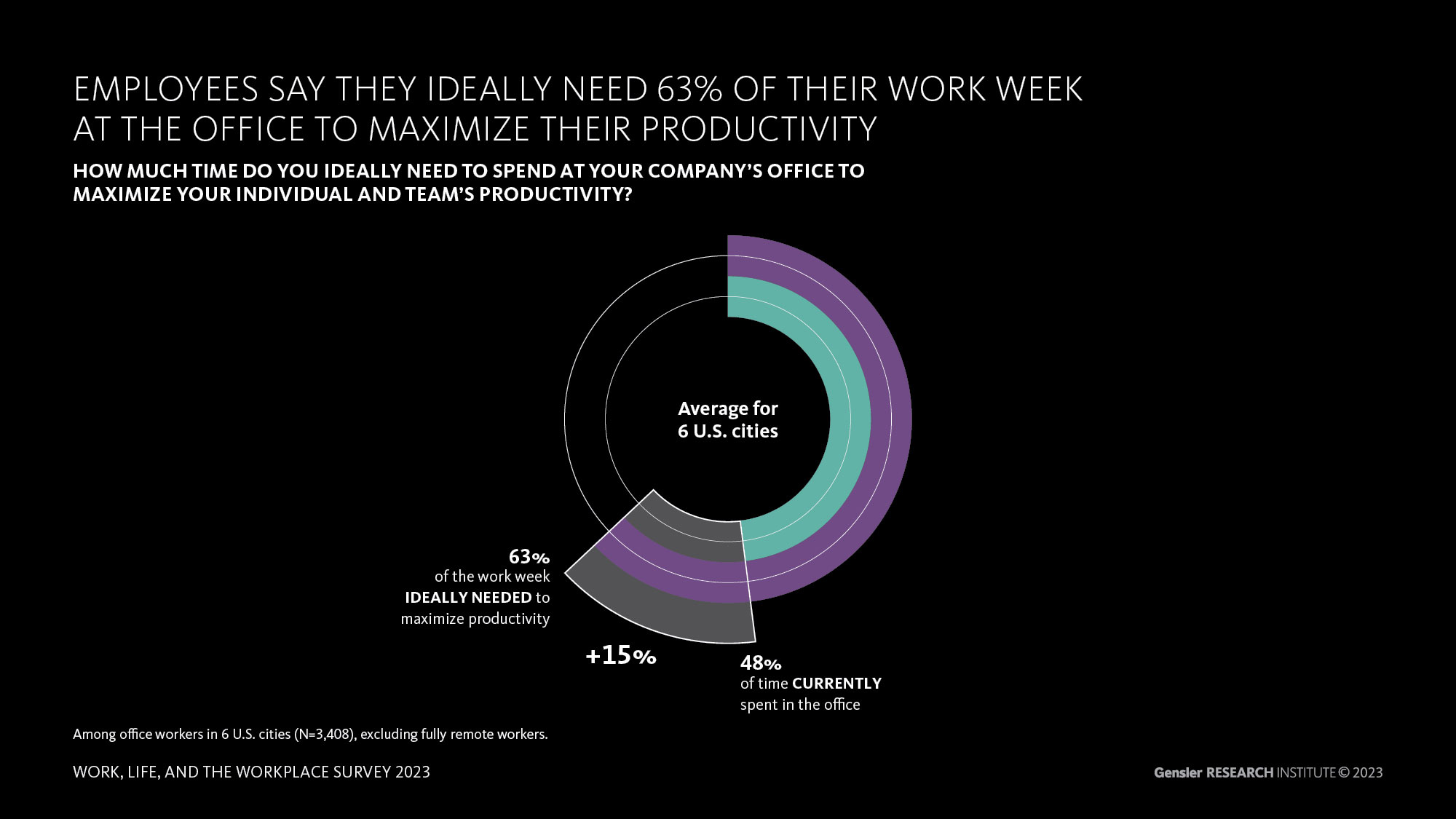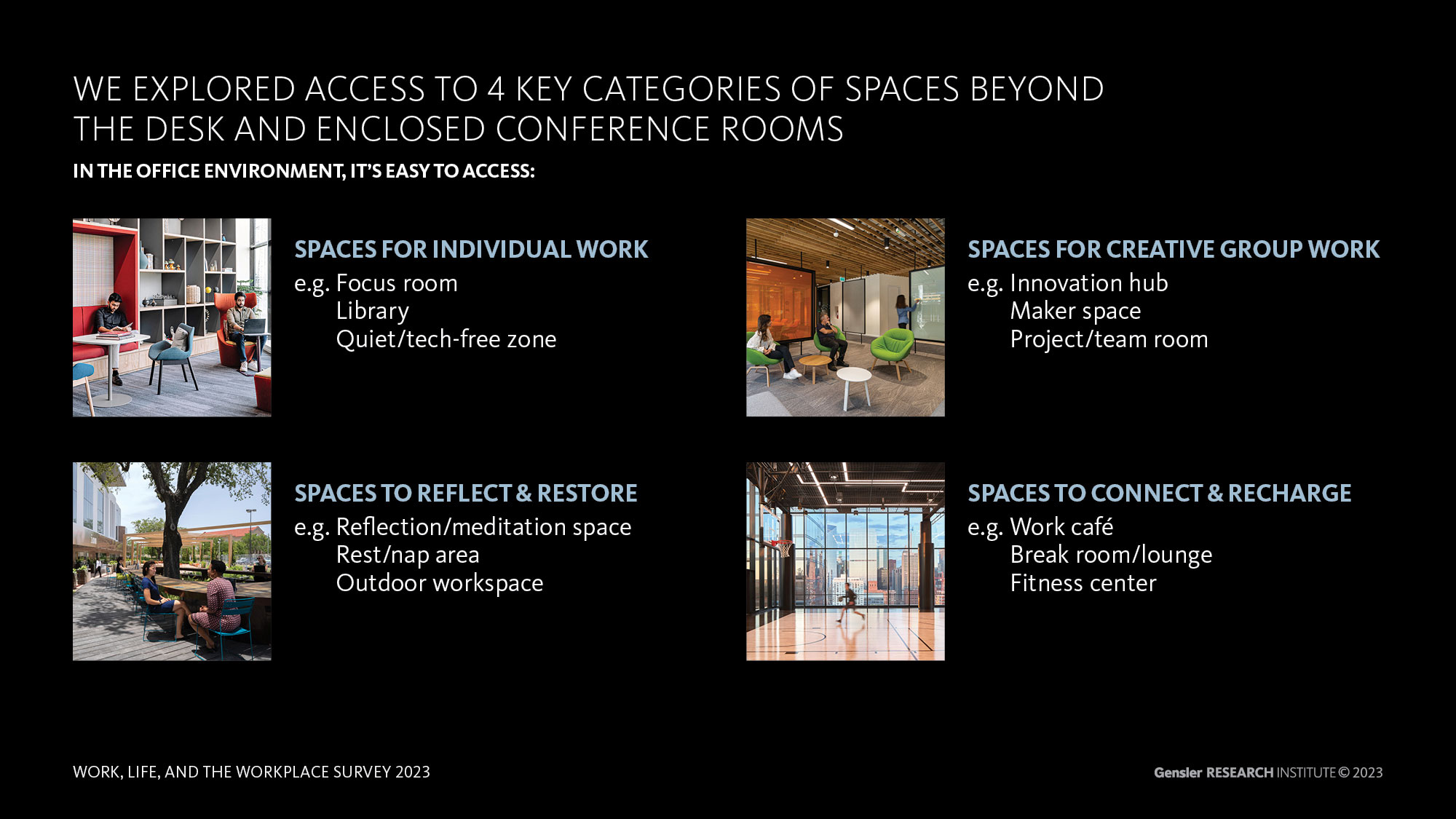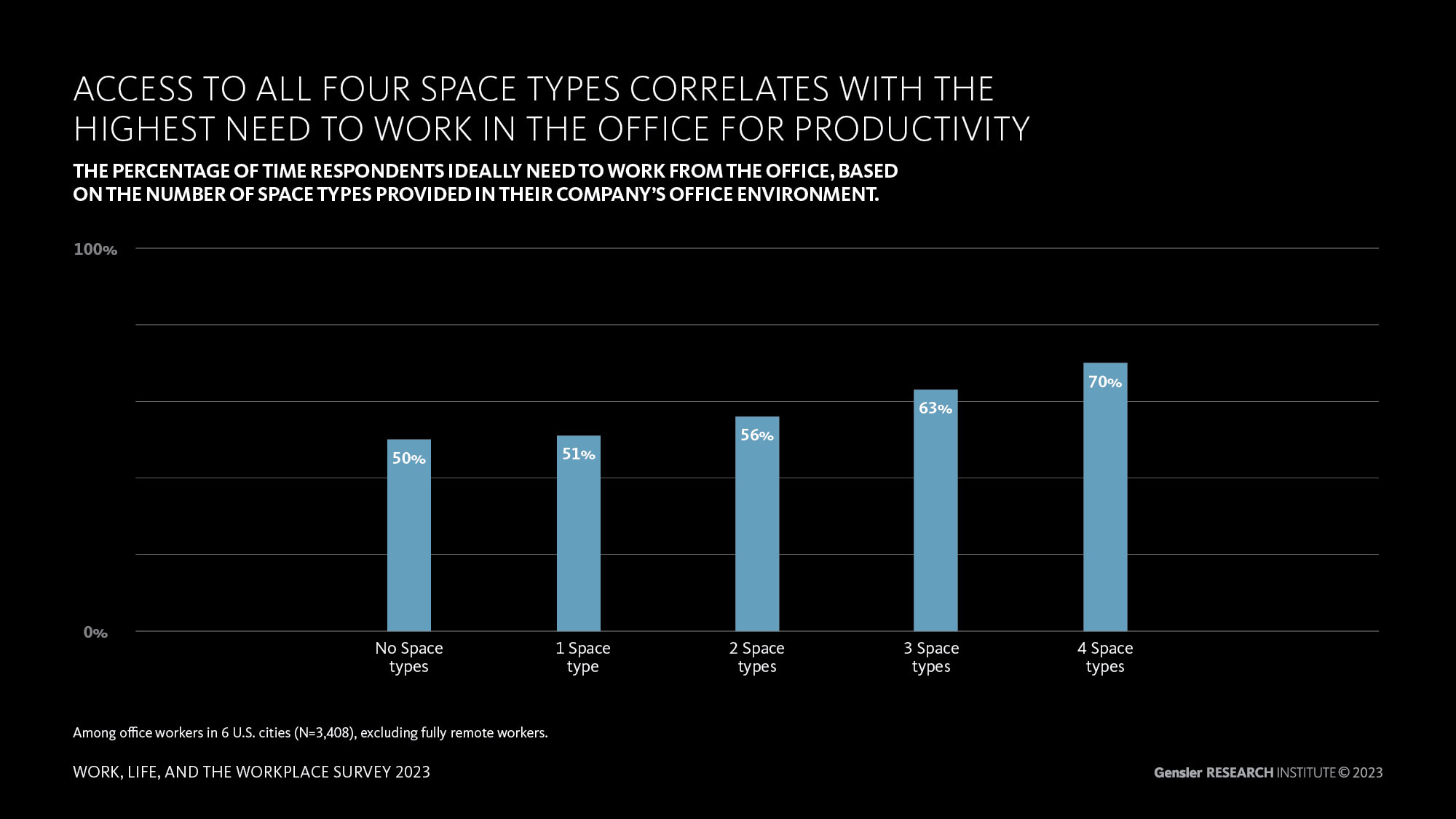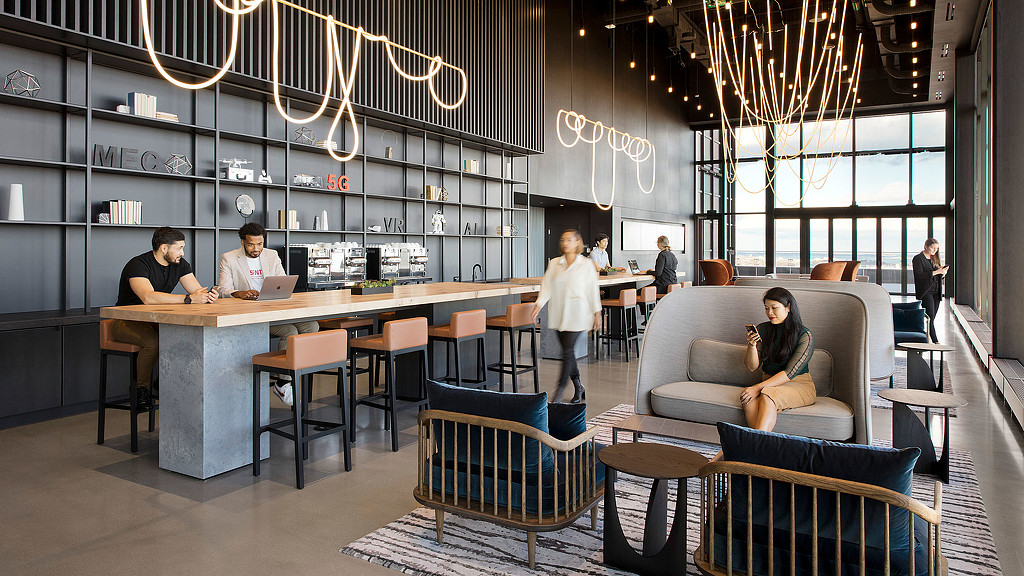As New Work Patterns Emerge, the Workplace Must Respond
November 06, 2023 | By Janet Pogue McLaurin and Anita Grabowska
In the four years since the start of the global pandemic, work and workers have permanently changed at all scales. Employers quickly transitioned data to the cloud to enable remote work, teams leveraged technology to collaborate virtually across geographies and time zones, and individuals learned how, where, and when they work best — both solo and with each other. Now, we are starting to see new work patterns emerge.
The factors driving the gap between what employees say and do.
We found an interesting gap in our 2023 global workplace research study of 14,000 office workers across nine countries and 10 industries: employees were coming into the office half of their time, but say they ideally needed the office two-thirds of a typical work week for their productivity. We uncovered that employees would be willing to return more often for a new mix of experiences.

This fall, we conducted an exploratory research study of 4,000 remote and office workers in six major U.S. cities to better understand the emerging factors in employees’ work and life that impact how and why they use the office. We found the gap between what office workers say and do still exists, and we uncovered the individual and team nuances that will impact how we design offices in the future.
The full report is posted on www.gensler.com. The following are a few insights:
Unique life factors impact how and where employees work.
As individuals, we have unique backgrounds, experiences, life stages, and lives outside of the workplace. Understanding an employee’s life helps make sense of their decisions for how they currently use the office and what they ideally need.
Generation: Younger generations (Gen Z and Millennials) have the largest gap in what they say and do. They come into the office 43-44% respectively but say they ideally need the office 64-65% of a typical week. More than their older counterparts, they value the office to focus on their work, socialize with colleagues, be part of a community, and for professional development/coaching.
Life Stage: Workers living with children under the age of 12 report a preference for full and extended days in the office beyond 9 a.m.– 5 p.m., while office workers living with children above the age of 12 have a stronger preference for partial days. Adults who live alone mostly schedule full days in the office but would prefer partial days or to come in only for specific meetings.
Commute: Office workers with 45-minute or longer commutes currently come into the office the least but the majority stay for full or extended days. Those office workers who live less than 15-minutes from the office report working at the office 63% but ideally needing to be there slightly less than they are currently.
Distributed work and team types impact how workers perceive the office.
How we work and what we do impacts the need to work in the office to maximize both individual and team productivity. This varies by industry; media and technology workers come into the office the least but say they need the office most, while legal, not-for-profit, and government/defense workers report needing the office less than they currently do.
Distributed Work: Working across multiple time zones seems to be a particular barrier to coming into the office as much as workers ideally need. Employees who work across different time zones most come into the office least and prefer partial or extended days in the office.
Type of Team: Nearly all (98% of) office workers are team-based. Functional teams (working primarily withing their department) and project-based teams report that the office is highly important for access to technology and professional development and coaching, compared to cross-functional teams (working across departments) who place more value on scheduled, in-person meetings with their team.
The physical work environment impacts the need to work there too.
How people work has fundamentally changed yet 63% of global workers have returned to physical workplaces that have not been remodeled since the pandemic. A majority (72%) of U.S. workers have choice of where to work within the workplace however, they may not have the choices they need.
Beyond the Desk: Four key categories of space can impact the ideal need to work in the office — spaces for individual work, creative group work, to reflect and restore, and to connect and recharge. Most (90% of) office workers have easy access to at least one of these space categories yet only 47% have access to all four space categories. The greater the access to all four categories correlates with a greater need to work in the office for productivity.
Office vibe: There is a mismatch of vibe in the office between what employees have and their ideal, with most employees wanting what they don’t have. Vibes range from quiet offices with fewer people, to spaces that are “buzzy,” to active spaces with lots of people.


Future design implications
A combination of life and work factors demand that we rethink the office to accommodate all office workers. Universal planning, where all work settings have a uniform layout, is great for real estate flexibility and efficiency, but it ignores the fact that people work and live in different ways. There is a new awareness that employees are unique individuals at various life stages who may have diverse living conditions, family arrangements, and commuting patterns. Adding to this complexity, how people — and their teams — work varies, dictating different purposes and timing to come into the office.
As we reimagine a new workplace for the future, it’s time to design people-centric environments that are flexible and tailored to workers’ diverse needs and behaviors. Workplaces must evolve and be ever-changing, consistent with the dynamic nature of work and the changing needs of the people who use them. This will create not only a more inclusive work environment, but one that recognizes and celebrates that we are unique individuals working collectively to learn, grow, and do great work together.
For media inquiries, email .


